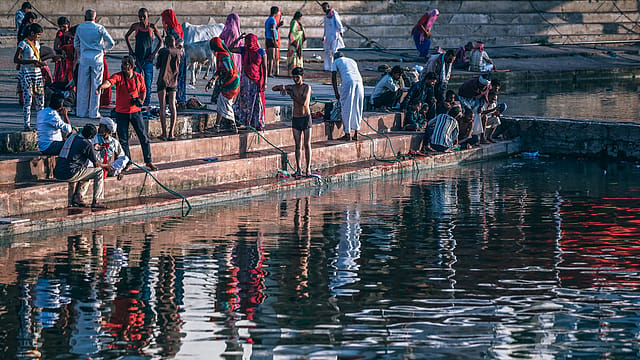This resource can help the Indian economy reach $5 trillion
ADVERTISEMENT

If you ask rich people how economic growth comes, they will tell you – entrepreneurship, cutting taxes, providing ‘single window clearance’ for business deals, through ‘reforms’.
Entrepreneurship must be fuelled at the bottom-of-the-pyramid, they tell you. People should become job-creators and not job seekers. What people rarely ever talk about are the ingredients that go into this much coveted conversion – the minimum basic needs for growth.
It must be that India’s next target is to expand its journey from being a low middle-income country to an upper middle-income country (according to the World Bank the range is between around $1,000 - $12,000 per capita income). The first step in that journey is double the size of the Indian economy to around $5 trillion.
Though it is not fashionable in the ‘pro-growth’ circles to talk about this, one of the fundamental need is a strong ‘social access net’; here, I am consciously using the word ‘access’ instead of security because it goes beyond security, issues like whether the village you live in has electricity connection or not is an access problem and not a security one. All individualistic solutions to such problems are merely adequate, the mainframe solution must be access provided by the state.
January 2026
Netflix, which has been in India for a decade, has successfully struck a balance between high-class premium content and pricing that attracts a range of customers. Find out how the U.S. streaming giant evolved in India, plus an exclusive interview with CEO Ted Sarandos. Also read about the Best Investments for 2026, and how rising growth and easing inflation will come in handy for finance minister Nirmala Sitharaman as she prepares Budget 2026.
One of the most critical in this list is safe drinking water and sanitation. Now that it is clear that one of the inputs that helped Narendra Modi win another full majority term in office was massive investment in sanitation (building around 90 million toilets) and completing the entire electricity grid connection to almost every part of India, the next big idea has to be water.
As the 2010 paper by Jamie Bartram and Sandy Cairncross called Hygiene, Sanitation, and Water: Forgotten Foundations of Health notes, “the preventable HSW-associated disease burden… is dominated by mortality from infectious diarrhoea, nearly 90% of which is borne by children under five years old and 73% of which occurs in only 15 developing countries”.
This paper also reminds that the industrial revolution in England had, as one of its primary pillars, a revolution also in public health based on clean water. “In 19th century Britain, every major city had a Medical Officer of Health. These officials played a key role as advocates of clean and plentiful water supplies and sanitation as prerequisites for health,” it points out. It was the British doctor John Snow who identified the cause of 1854 Soho cholera epidemic to the contamination of a water source – the public well had been dug too close to a cesspit, and in many ways changed the understanding of water-borne diseases.
Not much had changed in many parts of 21st century India until recently as it is well-known that for many years, the crisis of malnutrition and stunting among children in the country has been mainly caused by sanitation and poor-quality water (including drinking water) related diarrhoea and not lack of food.
There is no doubt that transformative policies on sanitation and water brings faster growth. A 2012 Frontier Economics report created for HSBC points out “the economic benefit of providing universal access (of clean drinking water and basic sanitation) to Brazil, Russia, India and China would amount to more than USD125 billion per annum, or about 1% of their joint 2010 GDP”.
According to this report, the economic benefit of universal access of clean drinking water and basic sanitation to India would amount to more than $43 billion a year or an economic gain each year of around 5.2% of GDP with a benefit cost ratio of 3.2 and a payback period of 7 years. In less than a decade, there could be a transformative boost to the Indian economy just by helping its citizens access clean drinking water and sanitation.
A new water ministry called Jal Shakti in India has brought all the disparate departments working on water under one roof to making this big-ticket change. This task is around six times bigger than the ambition of bringing electricity to every part of India. To fulfil the electricity dream, power had to be taken to a little more than 20 million households, whereas nearly 141 million households lack piped water.
But as challenging as it sounds, it is a fundamental pillar to India’s $5 trillion dream.
